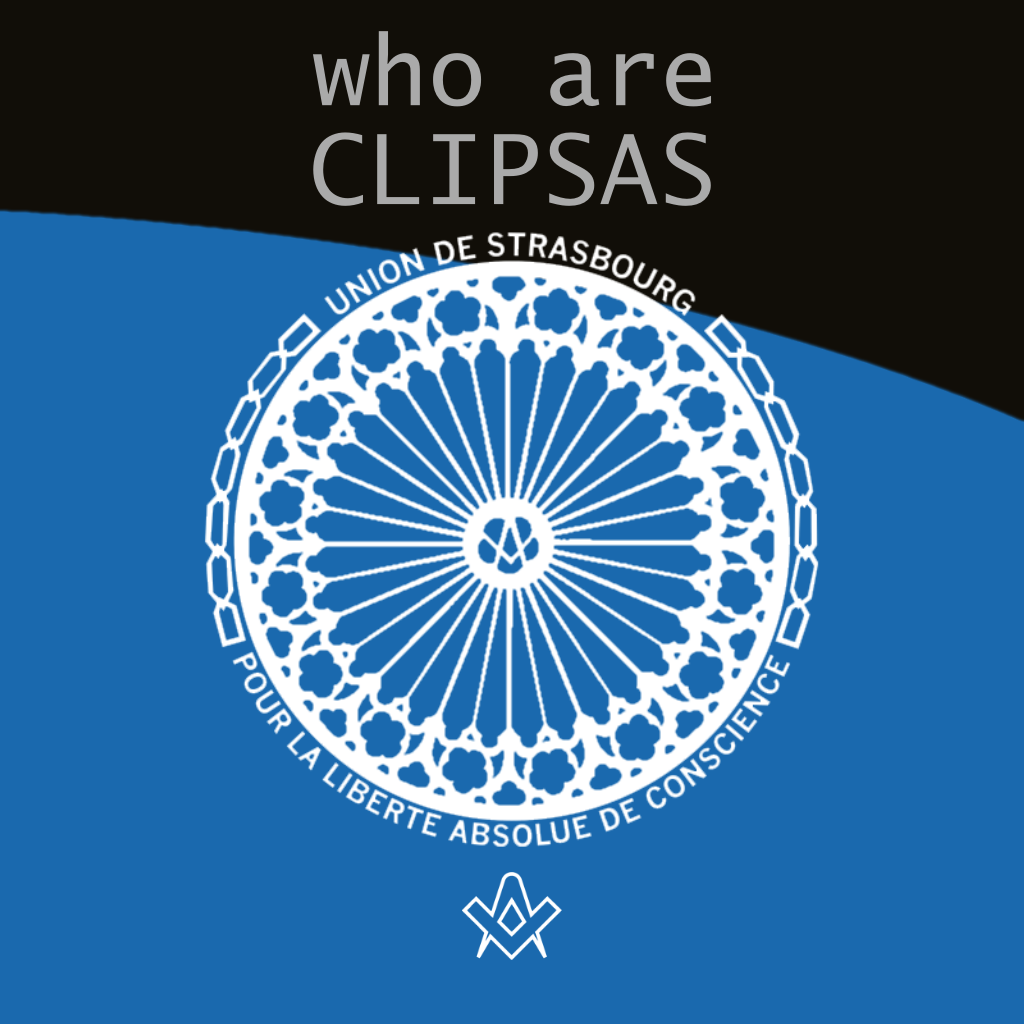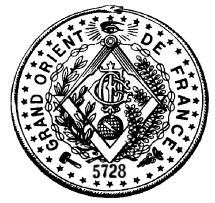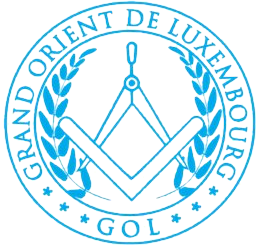There are two groups of Freemasons which can be defined as either Regular or Liberal. A regular Freemason is a member where the Grand Lodge is recognised by United Grand Lodge of England (UGLE). [*]
A liberal Freemason is where the Grand Lodge is not recognised by UGLE.
Liberal Grand Lodges have formed their own associations where they recognise each other. The term recognised means that members from one Grand Lodge can visit Lodges that belong to other recognised Grand Lodges.
CLIPSAS is an international organisation of liberal Grand Lodges.
CLIPSAS = Centre de Liaison et d’Information des Puissances maçonniques Signataires de l’Appel de Strasbourg
CLIPSAS was founded on January 22, 1961, by sovereign Masonic powers who, ‘faced with the growing intransigence of certain obediences, combined to call upon all Freemasons to come together, respecting their sovereignty, beliefs, rites and symbols, for a true and indissoluble Chain of Universal Union’
Source: CLIPSAS.org website

An international association of liberal Freemasonry, they adhere to the ethics proposed by the founding members – those of tolerance, fraternity, and union.
CLIPSAS came about to bring together Freemasons ‘who consider that humanity’s great victory over itself consists in ABSOLUTE FREEDOM OF CONSCIENCE’
Their aim is to reconcile the different metaphysical conceptions of Freemasonry, there is the choice not to use the Bible as the VSL, nor to adhere to the belief in a Supreme Being.
The Strasbourg Appeal
The Sovereign Masonic Powers gathered in Strasbourg on January 22, 1961.
CONSIDERING
That it is imperative to re-establish between all the Freemasons the Chain of Union broken by regrettable exclusives contrary to the principles of the Anderson Constitutions of 1723; That it is important for this purpose to jointly seek, taking into account all traditions, all rites, all symbols, all beliefs and with respect for absolute freedom of conscience, the conditions which determine the quality of Freemason.
ESTIMATE
That placing the work under the invocation of the Great Architect of the Universe and requiring that one of the Three Lights be the Holy Book of a revealed religion should be left to the discretion of each Lodge and each Obedience.
DECIDE AND DECLARE
To establish fraternal relations between them and to open the doors of their Temples, without condition of reciprocity, to any Freemason or Freemason who has received the Light in a just and perfect Lodge, provided that the Masonic specificity of the Lodge or Obedience allows these visits.
CALL
To all Freemasons to join this Chain of Union based on total freedom of conscience and perfect mutual tolerance.
CLIPSAS currently has 104 members, the six founding members in 1961 were:
A brief background to Continental – or ‘Liberal’ – Freemasonry.
Continental Freemasonry, also known as Liberal Freemasonry, includes the Masonic lodges, mainly (but not exclusively) on the continent of Europe, that recognise the Grand Orient de France (GODF) or belong to CLIPSAS.
Freemasons who belong to lodges that recognise the United Grand Lodge of England do not recognise Continental Freemasons, regarding them as ‘irregular’.”
Source: Wikipedia
The Grand Orient de France (GODF) is the oldest in Continental Europe. In 1773, it formed from the older Grand Loge de France allowing the GODF to date itself back to 1728 – or 1737.
Why two dates? In 1728, French Masons recognised Philip, Duke of Wharton as Grand Master of all Masons in France.
According to Lane’s Masonic Records, Wharton (who had been Grand Master of the Premier Grand Lodge of England in 1723), founded the first ‘Warranted or constituted Lodge in Foreign Parts by the Grand Lodge of England’- this, and the Duke’s Jacobite leanings was obviously enough for the Grand Loge of France to adopt him as Grand Master.
However, Grand Loge de France’s written records date to the latter – 14 May 1733.
The GODF is generally regarded as the mother lodge of traditional liberal (Continental) Freemasonry. As it took shape from 1733 it took on several Lodges of Adoption which were already attached to its own lodges.
Adoptive Lodges were open to Masons and their female relative and had their own rituals. This received the blessing of the then Grand Master of France, Louis Philippe Joseph d’Orléans (Duke of Chartres).
His sister Bathilde d’Orléans, the Duchess of Bourbon, was Grand Mistress of an Adoptive Lodge.

Louis Philippe d’Orléans with the insignia of the grand master of the Grand Orient de France. [PD-ART]
IMAGE LINKED: wikimedia Attribution 4.0 International (CC BY 4.0)
Lodges of Adoption flourished during the second half of the eighteenth century and spread to much of continental Europe.
However, the lodges were declared unconstitutional by the Grand Orient de France early in the nineteenth century. They were subsequently revived as female only lodges in the early 1900s, and in 1935 the male Freemasons unilaterally decided to confer autonomy.
Eight women’s lodges came together the following year to form the first ‘convent’, the early form of the future Women’s Grand Lodge.
They went dark during the German occupation of Francebut were reformed after the war in 1945.
After a general reconstruction, in 1952, the ‘Union maçonnique féminine de France’ officially became the Women’s Grand Lodge of France.
Lodges who later adopted the Freemasonry of their male counterparts, became the Grande Loge Féminine de France (GLFF).
In 1959, it abandoned the Rite of Adoption in favour of the Ancient and Accepted Scottish Rite. According to Histoire des francs-maçons en France (Ligou et al, 2000) only one lodge – Cosmos –retained the Rite of Adoption.
From the 1960s onwards, 21 lodges were formed in France and one in Switzerland at Geneva, the ‘Lutèce’ lodge.
During the following decade, 76 women’s lodges were created in France, Switzerland and Belgium and other rites were accepted.
The patent of the French Rite was sent to the GLFF by the Grand Orient de France and on 10 March 1973 the first lodge of the French rite, Unité, was formed, soon followed by many others.
In 1972 the GLFF created the Women’s Supreme Council of France.
Source: Wikipedia
The International Order of Freemasonry Le Droit Humain – a global Masonic Order open to men and women – is in mutual amity with (meaning recognition is reciprocal and members can intervisit) the Grand Orient de France, Grande Loge Féminine de France, and Grand Orient of Belgium.
Their work is the Scottish Rite through to the 33rd degree.
Women’s Freemasonry and Co-Masonry are not recognised by the United Grand Lodge of England or any lodges under its jurisdiction. They are deemed irregular and UGLE members may not intervisit with these lodges.
Footnote
[*] The Grand Orient of Italy
The Grand Orient of Italy was once a significant player within international Freemasonry, and in 1972 it was recognised as regular by the UGLE.
However, this recognition was withdrawn in 1993, due to accusations of corruption and Mafia involvement.
Today the Regular Grand Lodge of Italy is the only Italian Grand Lodge recognized by the UGLE, or the other home constitutions of Ireland and Scotland.
However, the Grand Orient of Italy is fully recognised by a large majority of the other regular masonic jurisdictions, both in Europe and worldwide.
Source: Wikipedia
Recent Articles: of current interest
 Keeping Passions and Prejudices within Due Bounds Master your emotions and find balance in a chaotic world with Darren Allatt's "Keeping Passions and Prejudices within Due Bounds." Discover practical strategies for self-awareness, emotional intelligence, and building meaningful relationships. Transform your life with calmness, clarity, and purpose. Start your journey towards emotional mastery today. |
 Masonry in the Age of Leisure - P2 Explore the optimistic future of Masonry in "Masonry in the Age of Leisure" by VVenBro Scott Wisdahl. Delve into the possibilities of a leisure-driven society where technology enhances social bonds, decentralizes the Craft, and reshapes Masonic traditions. Discover how Masonry can thrive in an interconnected, tech-savvy world. |
 Masonry in the Age of Leisure - P1 Embrace the future of Masonry in the Age of Leisure! Imagine an era where technology empowers deeper connections, offering a tapestry of diverse groups united by Freemasonry’s timeless values. Envision hybrid meetings transcending borders, fostering brotherhood across continents. This optimistic future cultivates intellectual growth and social interaction, heralding a Masonic renaissance for all. |
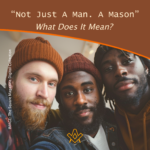 “Not Just A Man. A Mason”: What Does It Mean? Embrace the profound essence of Freemasonry, not merely a group but a journey of integrity, shaping men of dignity. By adopting virtues such as honesty, justice, and brotherly love, Freemasonry transcends time, urging us towards a dignified life. It’s more than being a man; it’s about living with unyielding dignity. |
 Multiculturism and the Culture of Freemasonry Freemasonry, with its deep roots in universal principles such as individual freedoms, education, and the pursuit of science, stands as a beacon of unity in a world divided by conflicting ideologies. By embracing the tenets of Freemasonry, including respect, peace, and mutual understanding, we can navigate societal challenges and foster a more harmonious world. |
 Embrace the new paradigm of eco-conscious living in the 21st century. Freemasonry, a cornerstone of society, must evolve, placing Nature at its heart. Reject anthropocentrism, embrace deep ecology, and champion sustainable living and global cooperation. Let Freemasonry lead by example, advocating for a world where humans and nature coexist harmoniously. |
 How Freemasonry Has Woven Itself into the Fabric of Society Like the weathered stones of an ancient temple, Freemasonry's origins are shrouded in mystery. This fraternal order has woven invisible threads throughout society's fabric since emerging in the 1600s. Despite declining membership, Freemasonry's influential legacy endures, seen in philanthropy, architecture, and the ideals of legendary members. Though facing challenges, revival remains possible if it adapts traditions to the modern era. |
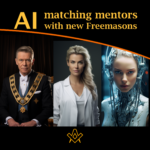 AI help in matching mentors with new Freemasons Harnessing AI for Freemasonry Mentorship: A Comparative Analysis. Freemasonry, an age-old fraternity, seeks to enhance its mentorship program by leveraging AI. While the Grand Master suggests detailed member profiles for matching, a Professional Coach emphasizes personality compatibility. Meanwhile, an AI Bot proposes machine learning for pattern recognition. Dive in to explore the potential and pitfalls of each approach. |
 Masonic Charities P.2 – The Shriners Discover the Shriners' legacy within Freemasonry; delve into their profound commitment to philanthropy and see how Masonic Charities demonstrate brotherly love, relief, and truth. Become inspired by the bonds that unite Shriners around the globe and their impactful work in local communities. |
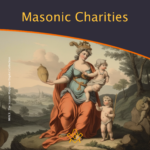 Freemasonry's commitment to charity has always been a priority and remains a core principle, reflecting its mission to promote brotherly love, relief, and truth in the world. Part 1 of the series gives an introduction to the establishment of the main Masonic Charitable endeavours in the 18th and 19th centuries and several key influencers. |
 Solomon Learning and Development Platform The Intersection of Freemasonry and Technology: Embracing the Digital Age with the New |
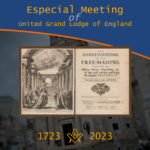 Especial Meeting of United Grand Lodge of England The year 2023 marks the tercentenary of the publication in London of the Constitutions of the Freemasons, based on Enlightenment principles that provide the philosophical foundations of modern Freemasonry. Why are the 1723 Constitutions important? Many Masonic histories have been concerned with ‘when’ and ‘what’. We also explore ‘why?’ |
 Like every other incident of initiation it is in the light of the larger meanings of Freemasonry that we must interpret the Rite of Destitution. But what does it mean? |
 Society of Grand Lodges in Alliance (SOGLIA) is a confederation of Grand Freemason Obediences in which all members obey the principles of Regularity. Assembled annually, in different places of the world, in order to share fellowship and to promote Masonic tradition, SOGLIA members are respecting the autonomy of each Grand Lodge. |
 Confederation of the Grand Lodges of Europe and the Mediterranean - Universal Freemasonry and its intellectual property are less and less taken into account in the current times of constant movement and unclear future prospects. |
 The Book of Law in Brazilian Freemasonry We are informed that, Freemasonry it is not a religion, but the candidate has a belief in a creative principle, which later, we call the Great Architect of the Universe. - by Fernando Rodrigues de Souza |
 Mike's Masonic Walks And Talks WBro. Mike Neville is a Masonic author and lecturer. He offers walks and talks primarily around London, based on his vast knowledge of the area and his specialist subjects, which cover all aspects of Masonic history. |
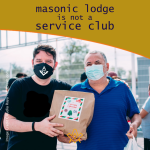 A Masonic lodge is not a service club An address delivered to the 10th Annual Conference of Western Canadian Grand Lodges (1950) in response to the question, "Should Our Western Grand Lodges Sponsor a Specific Program?" By |
 The Order of Bees was established as a youth initiative for the boys and girls of Prince Hall Freemasons, and symbolises the relationship existing between the activities of the youth and the family of bees. |
 The Confederación Masónica Interamericana (CMI) was founded in 1947, is a non-profit organization that groups together 92 Great Masonic Powers, admitted as members and distributed in 26 countries in South, Central, North, Caribbean and Europe. |
 This smartphone app is designed to work with all Freemasons from both Regular and Independent Grand Lodges around the world. |
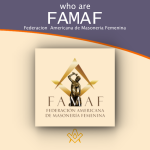 The American Federation of Feminine Freemasonry (FAMAF) is an organization that brings together Grand Lodges, Grand Orients and Confederations of Feminine Masonic Grand Lodges from the American continent. |
 The third largest Masonic Alliance of independent grand lodges, which currently has over 500,000 members in the world and an incredible resource of "good people with a good reputation" from around the world. |
 A Guiding Paw - my faithful 'brethren' A heart-warming story of one Mason's best friends – and how Gary's faithful guide dogs have helped fulfil both his Masonic life but also his valuable work in public service. |
 A visit to the Mother Lodge of Scotland Let me take you to the heart of Scotland to meet our Brethren of the Mother Lodge of Scotland, a journey into one of Freemasonry's deepest roots. Our guide Carlos Oliveira Santos who is from |
 An introduction to VEREINIGTE GROSSLOGEN von Deutschland / UNITED GRAND LODGES of Germany |
 International Masonic Union CATENA An international association of Grand Lodges and independent Lodges, with all true Masonic traditions, which adhere to the basic principles of the equal standing of men and women in Freemasonry |
 Social Impact of Prince Hall Freemasonry in D.C., 1825-1900. Alonza Tehuti Evans discusses Prince Hall Freemasonry, founded by African Americans. |
 Who are the Widows Sons, and what do they do, and how can you join ? |
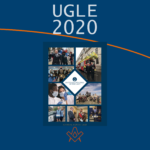 For the first time in its 300 year history UGLE has published an Annual Review |
 Founded in 1919 and named after the Grand Master of the Knights Templar, this International Order has helped young boys become great men. |
 9th International Conference of Freemasonry Hidden Meanings: Esotericism and Masonic Connections |
 An introduction to CLIPSAS and we look at who are they and what do they do |
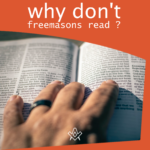 The title of this article will seem somewhat of an oxymoron, because at this precise moment you, most likely a Freemason, is reading this |
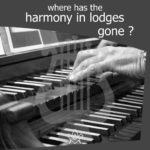 Music can make you either remember everything or forget everything! They even call it the 'rhythm' of life because life does have a beat, a rhythm, a song! Music is equally important for Freemasons. |
 Young Masons' Inter-Club Virtual Social An initiative was created to initially keep Brethren engaged in their Masonry whilst the restrictions of the COVID-19 pandemic are in place. |
 I've heard people say that we don't have heroes |
 What can we learn from Steve Jobs' address given at Stanford in 2005 |
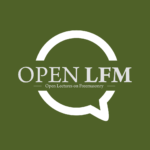 Open Lectures on Freemasonry as a series of monthly online lectures that aims to increase the visibility and accessibility of research into Freemasonry. The lectures are open to anyone who is interested. |
 What Kind of Library Do You Have? Many Brothers have no clue as to what kind of "Craft" library they actually have in their home or office. Most of these Brothers don’t care that they don't know – so, what kind of library do you have? |
 Russian Freemasonry a combination of a short sketch of its history and a review of the present-day Masonic landscape in this country |
 A brief outline showing the differences and similarities within Freemasonry |
masonic knowledge
to be a better citizen of the world
share the square with two brothers

click image to open email app on mobile device


